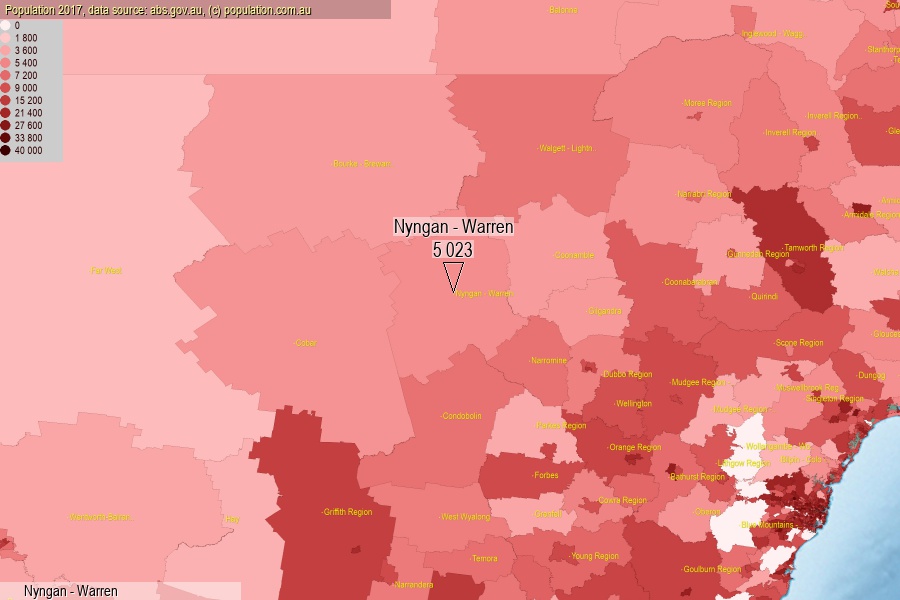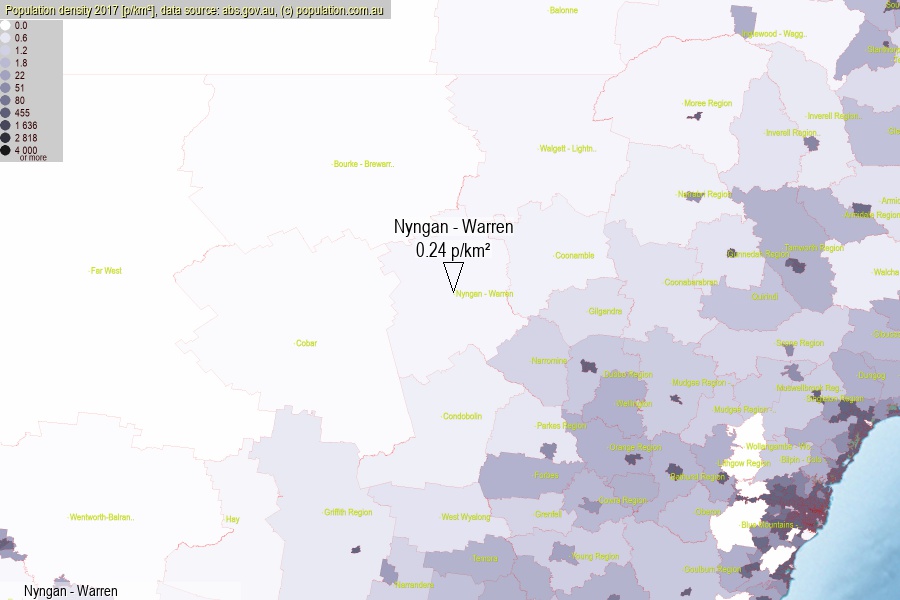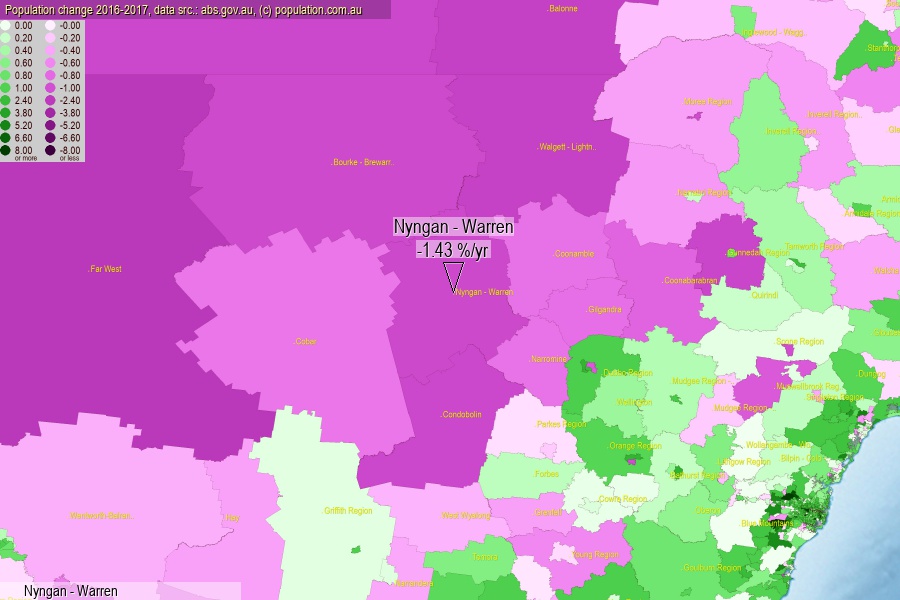 population.com.au
population.com.auLast official estimated population of Nyngan - Warren (as Statistical Area Level 2) was 5 023 people (on 2017-06-30)[2]. This was 0.02% of total Australian population and 0.063% of NSW population. Area of Nyngan - Warren is 21 216.00 km², in this year population density was 0.24 p/km² . If population growth rate would be same as in period 2016-2017 (-1.43%/yr), Nyngan - Warren population in 2025 would be 4 475. [0]



Click to enlarge. Nyngan - Warren is located in the center of the images.
Population [people], population density [p./km²] and population change [%/year] [2]
View borders » (new window) [4]
[1991-1992] -0.31 %/Yr.
[1992-1993] -1.03 %/Yr.
[1993-1994] -0.81 %/Yr.
[1994-1995] -1.41 %/Yr.
[1995-1996] -1.24 %/Yr.
[1996-1997] -0.29 %/Yr.
[1997-1998] -0.87 %/Yr.
[1998-1999] -0.90 %/Yr.
[1999-2000] -0.87 %/Yr.
[2000-2001] -0.61 %/Yr.
[2001-2002] -1.87 %/Yr.
[2002-2003] -2.36 %/Yr.
[2003-2004] -1.79 %/Yr.
[2004-2005] -2.06 %/Yr.
[2005-2006] -1.88 %/Yr.
[2006-2007] -0.07 %/Yr.
[2007-2008] -0.66 %/Yr.
[2008-2009] +0.07 %/Yr.
[2009-2010] +0.56 %/Yr.
[2010-2011] -0.15 %/Yr.
[2011-2012] -0.85 %/Yr.
[2012-2013] -1.21 %/Yr.
[2013-2014] -1.11 %/Yr.
[2014-2015] -1.38 %/Yr.
[2015-2016] -1.32 %/Yr.
[2016-2017] -1.43 %/Yr.
[0] Calculated with linear interpolation from officially estimated population
[1] Read more about SA2 and Australian Statistical Geography Standard (ASGS) on abs.gov.au
[2] Population data from Australian Bureau of Statistics (Population and density: 2017; change: 2016-2017)
[3] Digital Boundaries: Australian Statistical Geography Standard (ASGS) 2016.
[4] Border coordinates are simplifyed using Ramer-Douglas-Peucker algorithm.